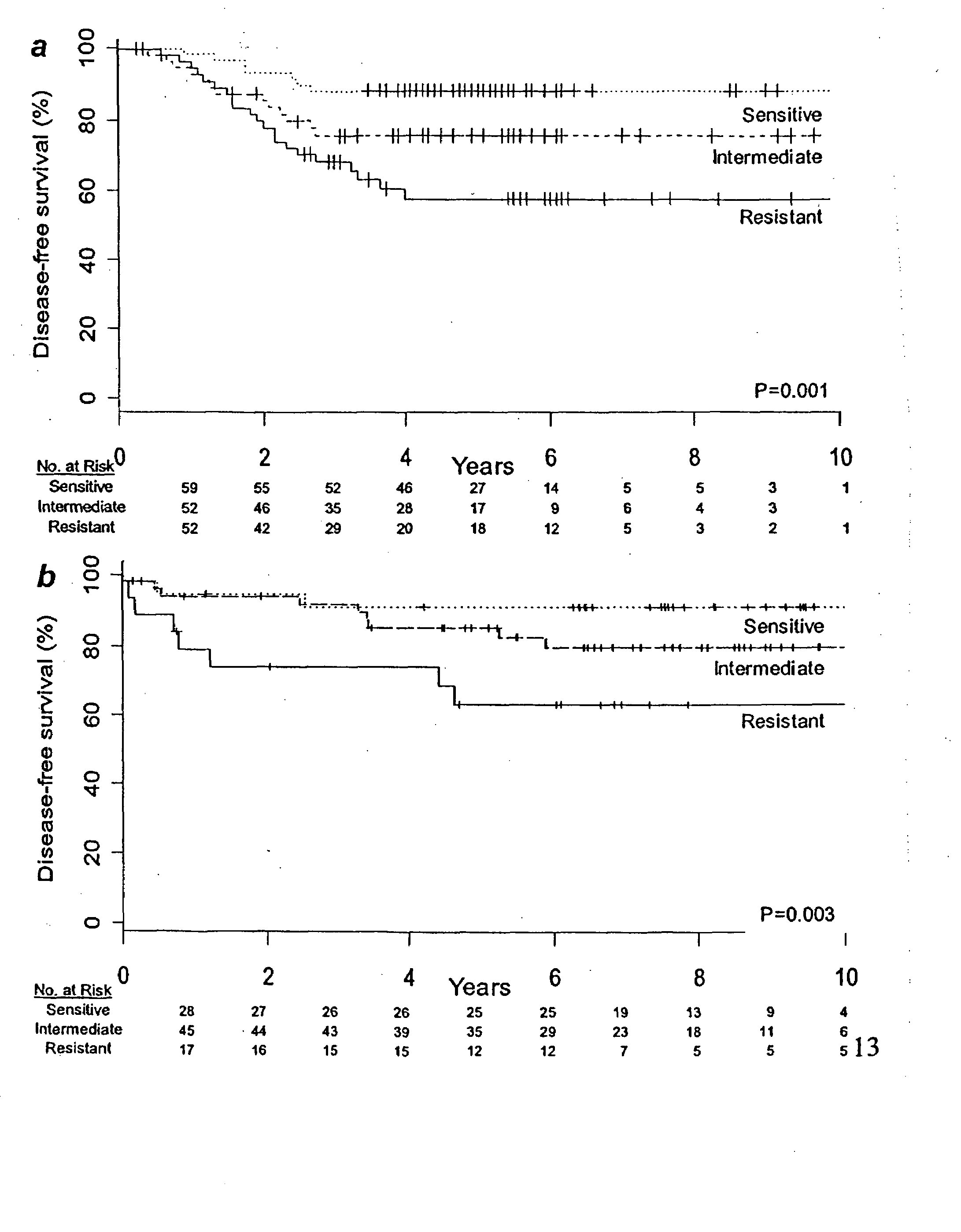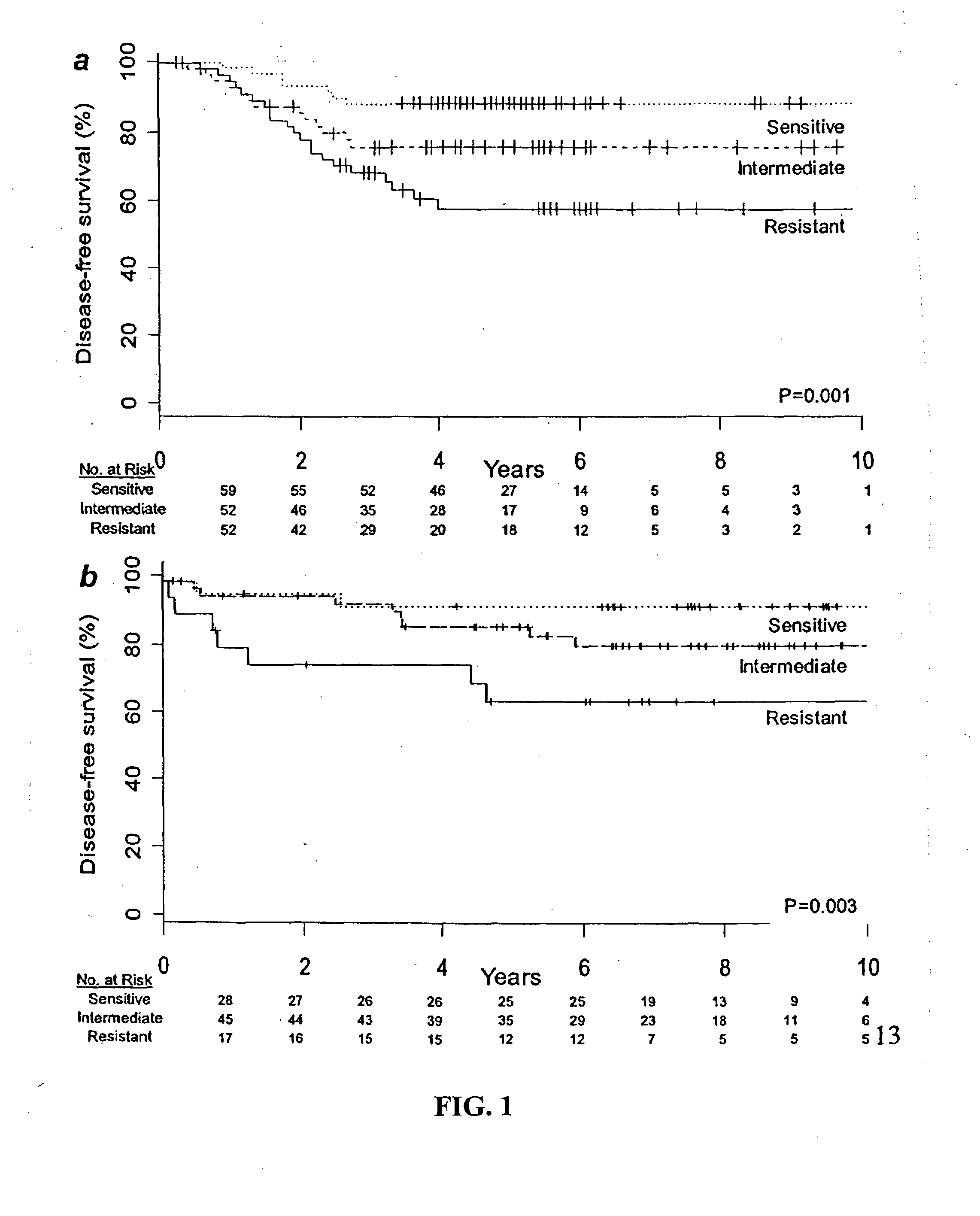Diagnosis and Treatment of Drug Resistant Leukemia
a technology for leukemia and diagnosis, applied in the field of genes, can solve the problems of predicted increased risk of relapse of patients affected by leukemia
- Summary
- Abstract
- Description
- Claims
- Application Information
AI Technical Summary
Benefits of technology
Problems solved by technology
Method used
Image
Examples
examples
Genomic Determinants Of Cellular Drug Resistance And Treatment Response In Acute Lymphoblastic Leukemia
I. Introduction
[0091]The present study was undertaken to identify genes that are differentially expressed in primary acute lymphoblastic leukemia cells that are sensitive or resistant to the widely used antileukemic agents: prednisolone, vincristine, L-asparaginase and daunorubicin, and to determine whether differential expression of these drug resistance genes influences treatment response. This study has revealed novel patterns of gene expression that confer cellular drug resistance and discriminate treatment outcome.
II. Methods
A. Patients and Isolation of Leukemia Cells.
[0092]Pre-treatment bone marrow and peripheral blood were obtained after informed consent from children with newly diagnosed acute lymphoblastic leukemia who were enrolled on the ALL-IX Dutch Childhood Leukemia Study Group protocol at the ErasmusMC / Sophia Children's Hospital or on German Cooperative Study Group f...
PUM
| Property | Measurement | Unit |
|---|---|---|
| Fraction | aaaaa | aaaaa |
| Fraction | aaaaa | aaaaa |
| Electric charge | aaaaa | aaaaa |
Abstract
Description
Claims
Application Information
 Login to View More
Login to View More - R&D
- Intellectual Property
- Life Sciences
- Materials
- Tech Scout
- Unparalleled Data Quality
- Higher Quality Content
- 60% Fewer Hallucinations
Browse by: Latest US Patents, China's latest patents, Technical Efficacy Thesaurus, Application Domain, Technology Topic, Popular Technical Reports.
© 2025 PatSnap. All rights reserved.Legal|Privacy policy|Modern Slavery Act Transparency Statement|Sitemap|About US| Contact US: help@patsnap.com


